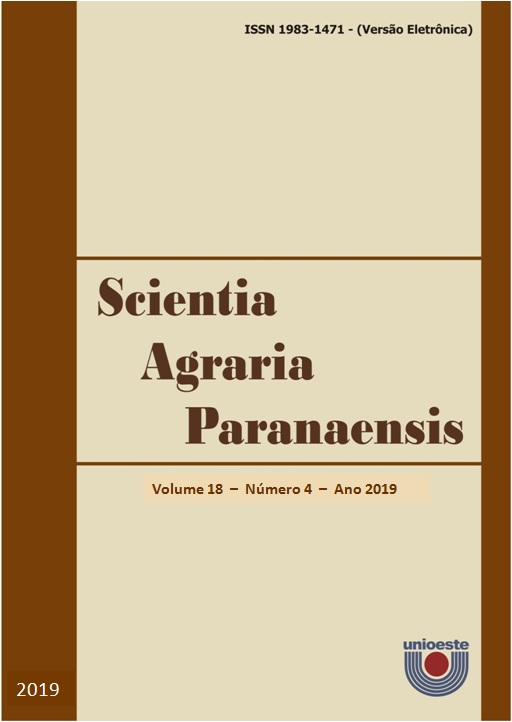Growth and vegetative development of soybean plants in soil type Concrectionary Petric Plinthosol
DOI:
https://doi.org/10.18188/sap.v18i4.22452Abstract
The central-north of Brazil is a region with strong presence of concrectionary soil, whose supposed disadvantages from the agronomic point of view, do not prevent their use in agriculture. However, more in-depth information about the behavior of crops of agricultural interest cultivated in this type of soil is few. Due to the observation of agricultural stands in this type of soil, it was hypothesized that plinthite ironstones concretions negatively interfere in the development of crops of agro-economic interest. The objective was to verify the growth and development of soybean cultivated in soil with the presence and absence of plinthite ironstones. Concretionary Petric Plinthosol were collected in the 0-0,20 m layer and part of the soil was sieved so that concretions larger than 3.10 mm in diameter were removed, thus leaving two treatments, soil with and without plinthite ironstones. Morphological evaluations were performed during their phenological phase. Soybean grown in soil without ironstones showed higher growth at 32 and 48 DAE and more leaflets when compared to soy crop grown in soil with ironstones. As for dry matter, soybean grown in soil without ironstones showed more values for aerial, root and total mass as well for aerial root rate when compared to soybean grown in soil with ironstones. Plinthite ironstones interfere with the growth and/or vegetative development of soybeans. Soybean has less vegetative development when grown in soil with plinthite ironstone concretions.
Downloads
Additional Files
Published
How to Cite
Issue
Section
License
Aviso de Direito Autoral Creative Commons
Política para Periódicos de Acesso Livre
Autores que publicam nesta revista concordam com os seguintes termos:
1. Autores mantém os direitos autorais e concedem à revista o direito de primeira publicação, com o trabalho simultaneamente licenciado sob a Licença Creative Commons Attribution que permite o compartilhamento do trabalho com reconhecimento da autoria e publicação inicial nesta revista.2. Autores têm autorização para assumir contratos adicionais separadamente, para distribuição não-exclusiva da versão do trabalho publicada nesta revista (ex.: publicar em repositório institucional ou como capítulo de livro), com reconhecimento de autoria e publicação inicial nesta revista.
3. Autores têm permissão e são estimulados a publicar e distribuir seu trabalho online (ex.: em repositórios institucionais ou na sua página pessoal) a qualquer ponto antes ou durante o processo editorial, já que isso pode gerar alterações produtivas, bem como aumentar o impacto e a citação do trabalho publicado (Veja O Efeito do Acesso Livre).
Licença Creative Commons
Esta obra está licenciada com uma Licença Creative Commons Atribuição-NãoComercial-CompartilhaIgual 4.0 Internacional, o que permite compartilhar, copiar, distribuir, exibir, reproduzir, a totalidade ou partes desde que não tenha objetivo comercial e sejam citados os autores e a fonte.


